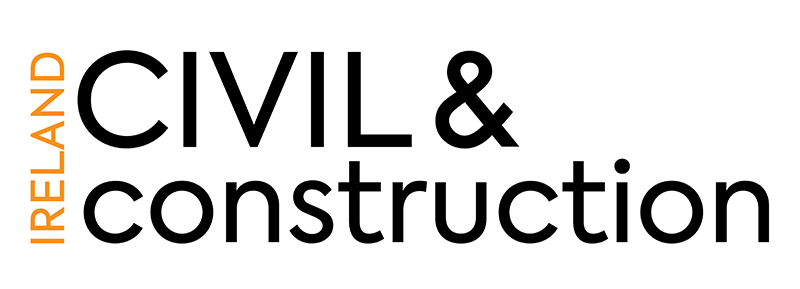
The Architecture, Engineering, and Construction (AEC) sector in Ireland operates within an ever-evolving European landscape, embracing a digital and green transformative era. The EU is characterized by aging infrastructure, a shortage of skilled labour, and high operational costs, with the AEC sector making a significant contribution to climate challenges. The industry faces a pressing need for modernization, as driven by the European Commission’s ambitious digitization and “Green Deal” sustainability initiatives. Within this context, the digitization of how the AEC sector operates, particularly regarding procurement processes, emerges as a promising area of innovation, to elevate the sector’s efficiency, productivity, and long-term sustainability.
The Current State of Procurement in AEC
Today’s procurement processes in Ireland’s AEC sector are beset by inefficiencies stemming from legacy practices, which are cumbersome, slow, and often susceptible to opacity, breeding corruption and collusion. This outdated approach starkly contrasts with the urgent need to deliver sustainable and rapid development or renewal of infrastructure. Digitization of the procurement process promises a paradigm shift, offering streamlined operations characterized by efficiency and transparency. This transition is not purely about technological adoption but also involves critical cultural reformation, leveraging data-driven insights to inform lifecycle cost analysis, predictive maintenance, and support a circular economy of material reuse.
EU’s Digital and Green Mandates: A Catalyst for Change
The European Commission’s commitment to enhancing productivity and addressing climate change, articulated through initiatives like the EU Green Deal, serves as a significant catalyst for this transformation. Upcoming mandates such as the Corporate Sustainability Due Diligence (CSDD) and the Corporate Sustainability Reporting Directive (CSRD), slated for implementation in 2024, necessitate agile and digitally savvy reporting and procurement processes. These mandates align with evolving regulations such as the Construction Product Regulations (CPR) and the Ecodesign for Sustainable Products Regulation (ESPR), heralding a future where concepts like Digital Product Passports and Digital Building Logbooks (safety files) become standard practice.
Technological Backbone: Understanding DLT, Blockchain, and Smart Contracts
To fully grasp the potential of digital transformation in procurement, it’s essential to investigate and understand technologies like Distributed Ledger Technology (DLT), such as blockchain. These technologies offer decentralized, immutable ledger systems that ensure transparent and tamper-proof transaction recording. Smart contracts, integral to this ecosystem, are self-executing contracts with terms of the agreement directly written into code. They promise to streamline transactions and enforce agreements efficiently, significantly reducing the need for intermediaries.
This technology has the potential to revolutionize how contracts are negotiated, agreed upon, recorded, managed, and executed in the AEC sector. By automating and digitizing contractual processes, blockchain can significantly reduce the time and resources typically spent on contract administration. This technology also offers enhanced security, traceability, openness, and transparency, ensuring that all parties have access to reliable and up-to-date information.
Smart contracts, powered by blockchain, automate the execution of contractual terms, triggering actions such as payments or notifications when predefined conditions are met. This automation not only streamlines processes but also minimizes the potential for disputes, as the terms are clear, transparent, and automatically enforced.
Lastly, the integration of Decentralized Autonomous Organizations (DAOs), as established project partnerships or alliances, in the procurement processes could align incentives in more truly collaborative endeavours and reduce traditional adversarial contracting to further streamline decision-making and project management. DAOs operate on blockchain technology, using smart contracts, to enable a transparent and democratic approach to managing projects and resources. This could revolutionize procurement in the AEC sector by enabling more collaborative and efficient project delivery models.
Global Standards and Regulatory Frameworks: The Key to Harmonized Digital Procurement
The successful adoption of digital procurement in the AEC sector hinges on the integration of global standards and regulatory frameworks. Financial reporting standards like IFRS/XBRL are pivotal in ensuring that digital transactions are consistent and reliable across different platforms and jurisdictions. These might be supported by frameworks like Open Peppol for automating and streamlining e-procurement, tendering, invoicing, and payment processes. The International Cost Management Standards (ICMS) provide a structured framework for cost reporting and sustainability analysis, crucial for accurate budgeting and decision-making in construction projects.
Of course, the digital transformation of AEC hinges on data from Building Information Modelling (BIM), which is the detailed digital representation of building and infrastructure. Using international information management standards like the ISO 19650 series, and open data standards such as Industry Foundation Classes (IFC), Information Delivery Specification (IDS), and data services for consistency, like buildingSMART Data Dictionary (bsDD), all play a critical role in aligning the AEC sector with evolving digital and environmental regulations emerging in Europe. These standards facilitate the integration of digital and sustainable practices into the procurement process, ensuring compliance with regulations. The current development of Digital Product Passports, incorporating sustainability performance, and serving the future idea of ‘Buildings as Materials Banks’, as part of the circular economy, is also anticipated to gain momentum, driven by these evolving standards and regulations.
Ireland’s Strategic Position and Response to the EU Digital Framework
This is no time for complacency with the ‘status quo’. Change is emerging rapidly, and as an EU member state, Ireland must proactively embrace these technological and regulatory changes, and establish itself as a competitive and viable player in the global market. This is contingent on our ability to adapt to and integrate these digital procurement processes. Embracing ideas such as distributed ledger technology, blockchain, smart contracts, and decentralized autonomous organizations (DAOs), Ireland can become a streamlined, transparent, efficient, and sustainable procurement system, ensuring that Ireland’s AEC sector not only remains compliant ‘follower’, but becomes a global ‘leader’.
Conclusion
The journey toward a digital and sustainable procurement in Ireland’s AEC sector represents a significant shift from traditional practices to a future-oriented, performance and outcome-driven approach, enabled by technology. By aligning with the EU’s digital and sustainability directives, the sector can achieve unprecedented levels of efficiency, transparency, and accountability. As Ireland navigates this transformative path, the opportunities for growth, innovation, and sustainable development are immense. The time for complacency, ignorance, and stubborn refusal to embrace the future has passed, and action is now required. The AEC sector must rise to the challenge, embracing digital transformation as the cornerstone of a prosperous, sustainable future.
About the Author
Ralph Montague is an architect and director at ArcDox BIM Consultants, member of the National BIM Council of Ireland, board member of CITA (Construction IT Alliance), and current chair of the National Standards Authority of Ireland (NSAI) Technical Mirror Committee for BIM Standards. He is the past chair of the Royal Institute of Architects of Ireland (RIAI) BIM Committee, and RIAI representative to the Architects Council of Europe (ACE) BIM Working Group. He is part-time lecturer at Trinity College Dublin post-graduate diploma for project management, and co-founder of the BIM Coordinators Summit community (BIM Heroes).
